Our Website
Motor home life started for us in 2018 and soon after the Web-Page was created. In order to maintain the Web-Page we are asking that visitors consider a small donation to help defray the cost.
$1 Donation
Search
Blog Posts
May 2021
It is the beginning of May and we had to make a decision concerning the sailboat.
Well Folks the engine is BROKEN and for this season we are calling it quits!
What we did was to put the boat on the market and IF it sells great, if not I will rebuild the engine.
That is what I should have done in …
March 2021
The Month of March finds us still working to splash the boat.
After waiting 6 weeks for a part to come from England only to find that another place in the US had one in stock!
The frustration is that it caused us an extra $600 in charges at the boatyard!
While we were waiting many little jo…
February 2021
The month is half over and we are still waiting for the part to show up all the way from England, and naturally the delay is blamed on COVID!
During the down time we have kept busy with little jobs around the boat and perfecting our solar use!
Our boat is now completely independent of the Yard…
January 2021
January finds us between the boatyard in Placida and Doug’s house to prepare Dawn Treader for a long journey!
Solar panels have been installed and new batteries as the Dawn Treader returns to life.
Repairing the Fuel Injection Pump was first on the agenda.
Some of the parts must come all th…
Boat and RV December 14 (Free vs Paid)
Boat and RV
December 14, 2019
Conestoga Charlie is breaking with the general format today.
There are 22 photos and not in the order of travel but rather in the order of amenities.
I was reading a piece about a very bad commercial campground experience, qnd thinking back I remembered some…
July 2019
Boat and RV
July 1, 2019
Conestoga Charlie with general ramblings and more about our Solar experiment!
This is the second day in Cabin Creek which is really easy access off the I-90 Exit 63 and even comfortable for a class A! (GPS Lat 47.2933 Lon -121.2877)
Something that is troubling …
To better view this site on a smaller device, Please turn your device.

You are visitor number
106163
Blog Posts
May 2021
It is the beginning of May and we had to make a decision concerning the sailboat.
Well Folks the engine is BROKEN and for this season we are calling it quits!
What we did was to put the boat on the market and IF it sells great, if not I will rebuild the engine.
That is what I should have done in …
March 2021
The Month of March finds us still working to splash the boat.
After waiting 6 weeks for a part to come from England only to find that another place in the US had one in stock!
The frustration is that it caused us an extra $600 in charges at the boatyard!
While we were waiting many little jo…
February 2021
The month is half over and we are still waiting for the part to show up all the way from England, and naturally the delay is blamed on COVID!
During the down time we have kept busy with little jobs around the boat and perfecting our solar use!
Our boat is now completely independent of the Yard…
January 2021
January finds us between the boatyard in Placida and Doug’s house to prepare Dawn Treader for a long journey!
Solar panels have been installed and new batteries as the Dawn Treader returns to life.
Repairing the Fuel Injection Pump was first on the agenda.
Some of the parts must come all th…
Boat and RV December 14 (Free vs Paid)
Boat and RV
December 14, 2019
Conestoga Charlie is breaking with the general format today.
There are 22 photos and not in the order of travel but rather in the order of amenities.
I was reading a piece about a very bad commercial campground experience, qnd thinking back I remembered some…
July 2019
Boat and RV
July 1, 2019
Conestoga Charlie with general ramblings and more about our Solar experiment!
This is the second day in Cabin Creek which is really easy access off the I-90 Exit 63 and even comfortable for a class A! (GPS Lat 47.2933 Lon -121.2877)
Something that is troubling …
May 2019
Boat and RV
May 3, 2019
Conestoga Charlie and crew welcome the new members to our group.
The group is growing nicely and so far appears to be well balanced between Campers and Boaters.
Many travel by both so hopefully in the near future we will see more travel stories posted by our members.
Today my talk is about repairs.
A very good friend once said that cruising is “Repairing your boat in beautiful places.”
I think it is similar in an RV as many repairs are unplanned.
We have been quite fortunate in that regards as repairs have been very slight and manageable.
First, soon after the purchase there was two important modifications we felt necessary.
The original battery was an incorrect type so it was replaced and another added for increased capacity.
A 750 Watt Inverter was installed to handle computer use and other 110 AC accessories when no shore power is available.
We had to repair the slide out awning as the top seal was broken when we drove under a tree branch in Casper, Wyoming.
Some of the screws were broken so the old ones had to be drilled out and replaced Thank you (Jim Butler, my Brother).
My complaint is that the manufacture used plain screws instead of stainless steel and they were so corroded they would break off and had to be drilled out before replaced. Then a silicone caulk was used to reseal the joint end of leak.
One of the moldings on the slideout pulled off as it had slipped down. It was only held by thin brads.
It was removed and about ¾ inch from the bottom and reattached with screws. No more problems.
A vacuum line broke for the truck Air Conditioning and had to be replaced.
The roof Air Conditioner Shroud had been repaired before but the chunk came out of the middle which allowed water to pour into the coach.
The replacement was $125 however for a lot less I formed a clear sheet of polycarbonate and some 3M 5200 Sealant/Adhesive (used for boats) and the whole repair was only about $23!
After all this the leaks stopped for the most part.
The rest of the photos are some of the “Beautiful Places” that we have stayed at.
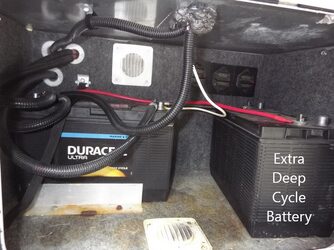 |  |  |
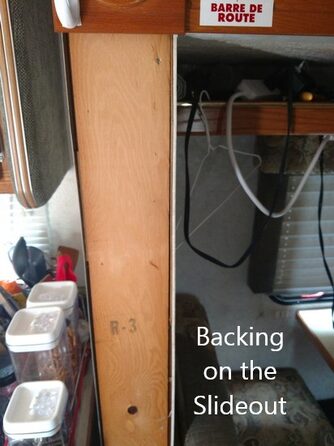 |  |  |
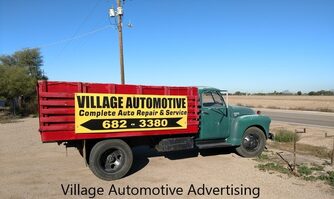 | 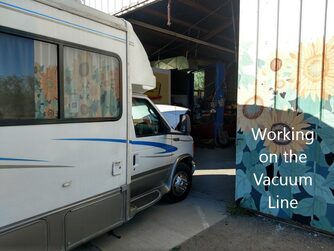 | 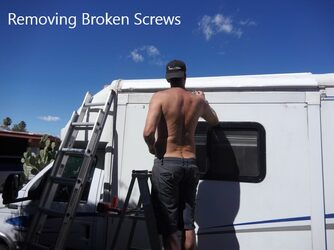 |
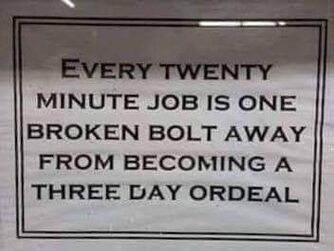 |  |  |
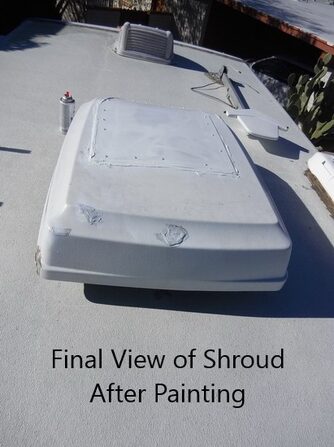 |  | 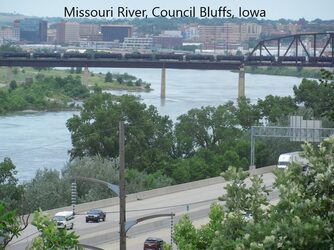 |
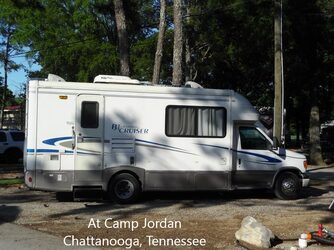 |  | 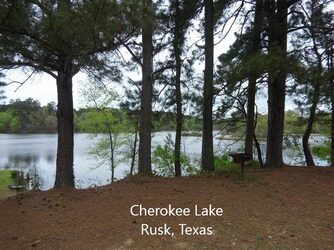 |
 | 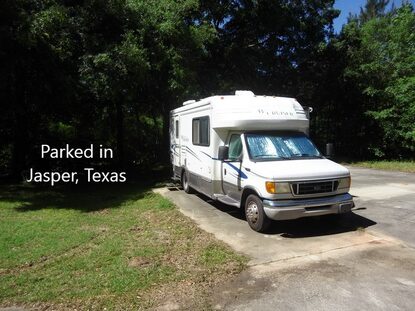 |
Boat and RV
May 4, 2019
Conestoga Charlie on a rainy day in Jasper Texas.
May and June heralds the start of camping/travel season for many.
Last year about this time we purchased our motor home with the intention of escaping the summer heat and hurricanes of Florida.
Life, as is said, gets in the way of plans and we have not yet returned to Florida!
Boat and RV evolved from the original Sailboat to Motor Home and expanded to encompass the entire spectrum of mobile living and travel modes.
The intention is to present information about destinations, issues, and relevant information for those among us that have chosen to live mobile.
For those contemplating full time living in an RV or liveaboards on a boat there are many relevant issues. No one can doubt our country has serious problems which will affect our lifestyle.
Washington politics is more like a bunch of junior high student who stole mom and dad’s credit cards!
What these people do will determine the price we pay for fuel, the ability to use federal lands, the condition of the roads we drive on and the waterways we travel, and most of all our freedom to choose our lifestyle.
The last thing l want is to start a political debate but it is important to be vigilant.
Freedom to live and travel has always been paramount mi my life and is reflected in my career choices, such as the 3 best things about teaching----June, July, and August!
We live in a most wonderful country with great things to see and a fabulous heritage to go along with it.
So much so many travel here for that reason. We have met several during our travels that have done so. Such as group of students from Armenia who rented a motor home to spend vacation traveling.
Then there was a German Couple in an Italian 4 wheel drive diesel motor home that looked much like a military truck. We ran into them twice and our discussion was about how safe and easy travel was in the US compared to some other places.
We have traveled most of the western half in our motor home so far and the eastern parts in our sailboat.
Our travels so far have embraced that heritage.
In Council Bluffs, Iowa there is a Monument to Sergeant York who was the only casualty during the Louis and Clark expedition, which literally discovered our new lands.
In Kansas City, Missouri a museum dedicated to the discovery and excavation of the Steamboat Arabia tells the story of the struggles to settle in those lands.
Bentonville Arkansas home of Wal-Mart.
In Montana there is much to see, in Polson, The Miracle of America, Flathead Lake one of the largest, a complete city under the streets in Havre, and Great falls which stopped Louis and Clark temporally.
North and South Dakota has vast wheat fields, Mount Rushmore, The World’s Largest Catfish (featured in the movie Vacation)!
While picking up mail in Hankinson, North Dakota we were treated to a tour of a Lollypop factory. Prairie Village at the center of the North American Continent at Rugby, North Dakota was another fabulous museum.
A rest stop along Interstate 80 in Utah is a tribute to the west expansion by wagon train.
I suppose The Cadillac Ranch in Texas could be considered a tribute to our mobile desires!
These are just a few of the reminders of our wonderful heritage which we need to protect and nurture as well as pass on to the next generations.
 |  |  |
 | 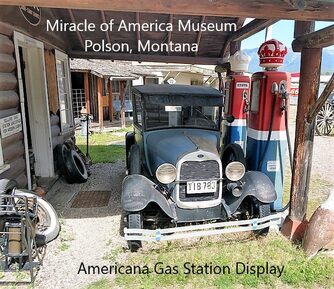 | 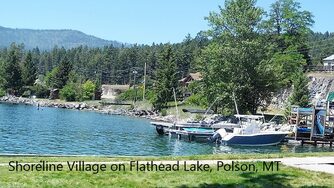 |
 | 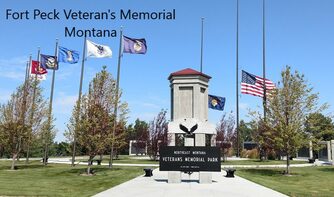 | 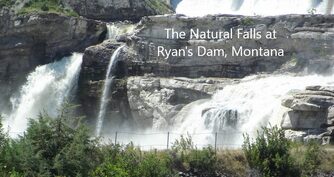 |
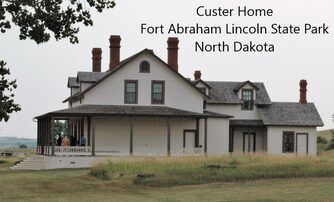 |  | 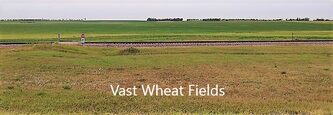 |
 |  | 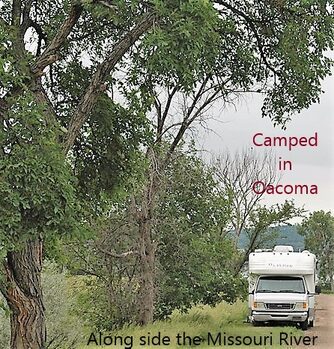 |
 | 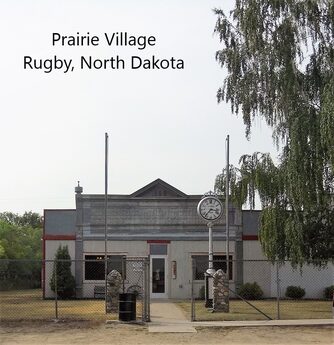 | 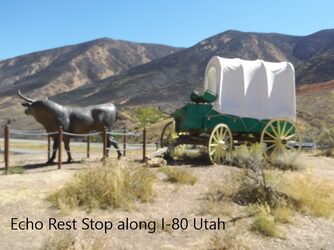 |
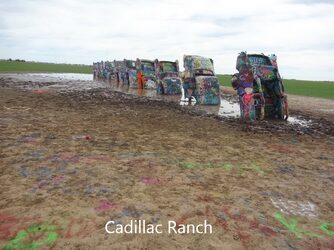 | 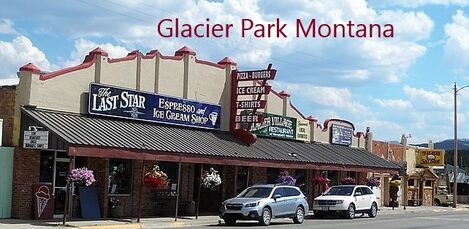 |
Boat and RV
May 6, 2019
Conestoga Charlie here with the first solar experiment report.
I realize that many of our readers have operating solar systems and are quite happy with the results.
When I got my first boat most people were using wind generators which only delivered 40 Amps and was noisy as all get out however, they would produce even at night.
Still there had to be a battery bank for those calm days.
Solar systems also require a battery storage system as they do not produce at night and have reduced output on cloudy days. Most people are already aware of these limitations.
One very important advantage of Solar Cells over a Wind Generator is simply that it is easy to add capacity with more or larger Solar Cells.
We could put 2 of the wind generators on the boat and we would have twice the noise and only 8 Amps.
The Solar Cell I am using now is a 100 Watt panel which at maximum would almost replace both of the wind units. AND STAY QUIET!
Now for the real life results so far.
Yesterday we got everything all set up.
We are not yet ready to string the wires down a vent behind the refrigerator and across under the floor to the Electrical Control Panel and bolt the Solar Panel to the roof.
Therefore a detachable system that is easily stored was constructed using some battery clips, the controller and removable plugs at the Solar Panel. (See photos)
Last night everything was connected and the AC Shore Power cord disconnected.
This morning before sunrise the battery voltage was at 12.4 volts.
Shortly after the sun rose it jumped to 12.9 volts.
About 30 minutes later the voltage was 13.5 volts.
One thing I would like to see on the controller is the Amperage (many have that feature), as that is as important as the voltage.
Some features to have in a controller:
- The ability to program for battery type is more important as people move to more hi-tech batteries such as Lithium-Ion and such.
- Controlling the state of charge such as Float, and Equalize. Float allows the batteries to maintain full charge without overheating. Equalize is a low amperage high (14-15 volt cycle) that essentially prevents sulfating and will help extend battery life.
- Complete readout for both Amperage Voltage and number of total charge during the day.
There may be a few others but these are the most important.
Currently, both computers are plugged into the inverter and a 12 volt fan is running, earlier the coffee grinder as well as the phone charger and even with the intermittent cloud cover it is holding at 13.2 volts.
The rest of the photos today are from sights along the way. Happy Travels!
 | 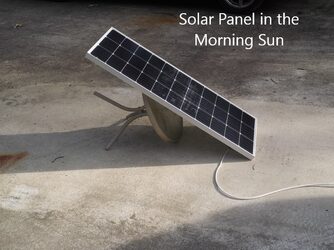 |  |
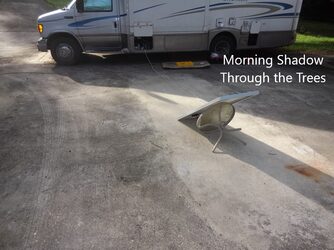 | 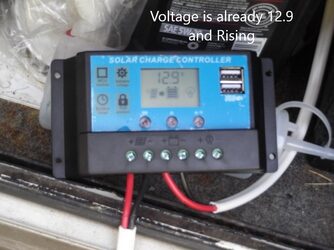 | 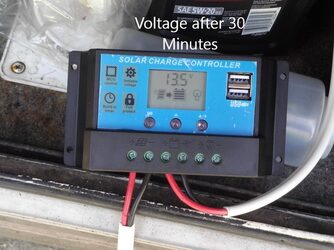 |
 | 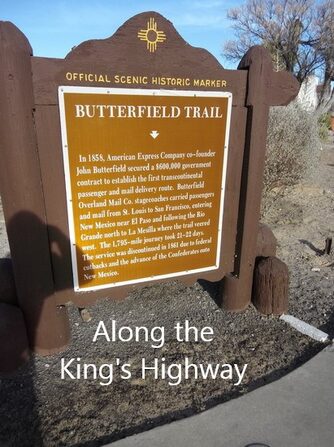 | 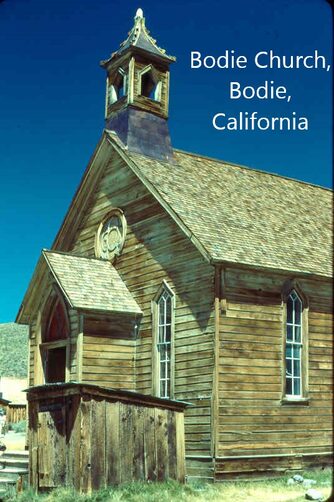 |
 | 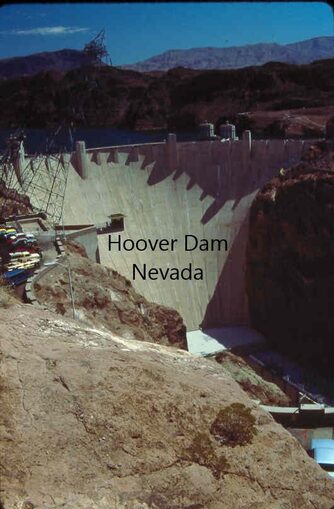 | 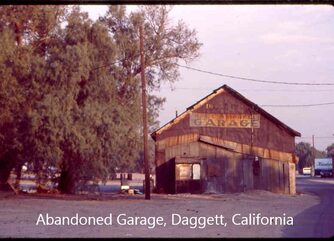 |
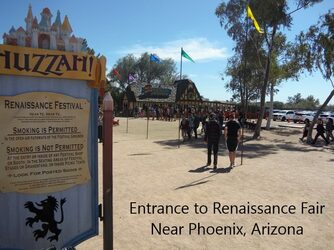 |  |  |
Boat an RV
May 7, 2019
Conestoga Charlie with the results of the solar experiment.
The solar cell is a 100 Watt panel and a controller that will handle 30 amps and 50 volts in order to expand later!
I realize that a 100 Watt panel is not adequate to totally support our motor home.
What it was able to do was run everything we normally use all day except for the air-conditioning
To start, shore power was disconnected and the porch light was left on all night but that only brought the battery to 12.4 volts.
As the first rays of the sun hit the solar panel the voltage started at 12.5 and about 30 minutes later was at 13.5 to 13.6 where it stayed all day.
We had to install a 750 Watt inverter as the motor home had no provisions for one when we bought it.
All day there were 2 laptops and a fan for cooling and occasional loads such as coffee grinder vaccum food sealer and various chargers for phone, tablet, and WiFi.
This is pretty much our usual electric use.
Our refrigerator is a 2-way gas electric.
While on the subject of refrigerators I was in a discussion where some had regular household refrigerators. I was thinking this was rather false economy; however, one person said when they bought their 5th wheel it was a $5,000 option to have 2 way gas/electric Refrigerator, and another stated that it was going to cost $5,000 to replace the refrigeration unit when theirs failed. There were other similar stories.
I know that 5 years ago when we went shopping for a duel voltage refrigerator for the sailboat it was about $1,400 (On a sailboat it must be a compressor type as a gas unit must be kept relatively level. (+/- 3 degrees!)
So if those prices are relative it is understandable.
It was like when we were shopping and the price of a Diesel rig was about $10,000 more and my friend said you can buy a lot of gasoline for $10,000 and the same is true for solar cell, batteries, and inverters.
 | 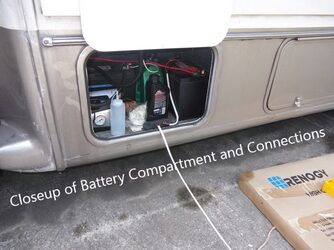 | 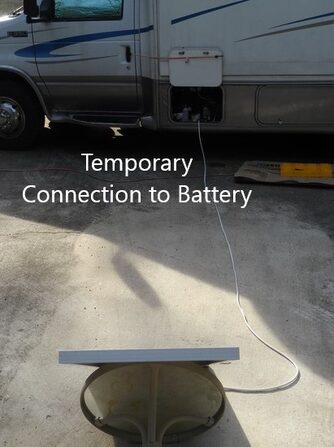 |
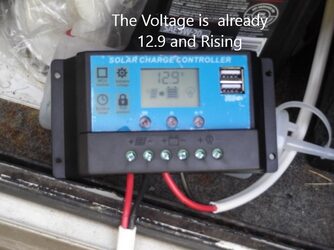 | 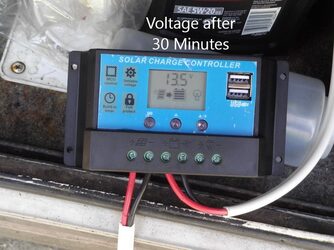 |  |
 | 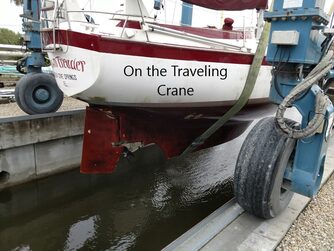 | 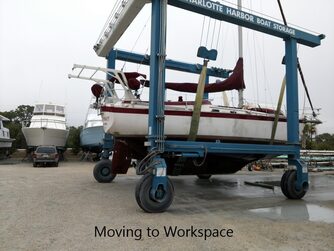 |
 | 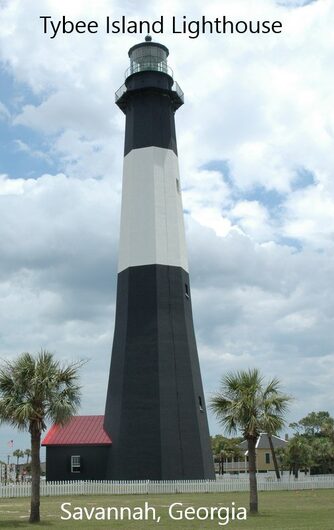 |  |
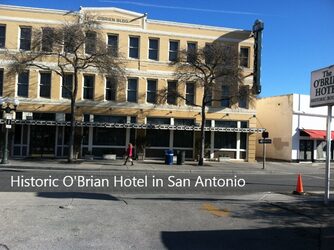 |  | 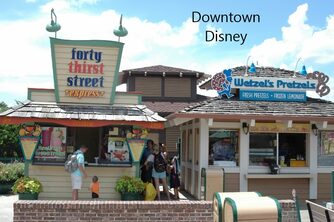 |
Boat and RV
May 8, 2019 Part 1
Conestoga Charlie in Texas surviving the rain, camped on a great concrete slab, but the road in is MUD!
I wish to welcome the new members to the Facebook Group.
There have been a number of requests the last few days, so I thought today I’d give a background to not only the group but the founders!
Mobile Odyssey grew from our experience of adding a motor home to our boating life, which started in 2003 after early retirement from teaching Mathematics.
The last five years was spent living on and overhauling an Endeavour 37 sailboat in Florida. The process was journaled in a web site http://ourdawntreader.com.
After surviving Hurricane Irma on board with no damage in 2017, and believing all the repairs were finished, plans were made to take the boat to the yard in Port Charlotte to refresh bottom paint.
On the way down the Caloosahatchee River, after motoring for about 10 hours we anchored for the night. The next morning after pulling the anchor the engine suddenly started “runaway” and to shut down required blocking the intake. The diesel fuel was leaking from the Injection Pump, so the boat was towed to the yard, pulled out, and is now stored in Placida, Florida.
The thought of spending another summer in Florida was just not acceptable and Dawn was so desperate to escape she bought a tent and said we would take the car and camp!
It was about this time we found our motor home after a long and disappointing search.
We left Florida and headed North in June of 2018 and have yet to return to Florida.
That started the original blog “Sailboat to Motor Home” which evolved into Boat and RV and the Group Mobile Odyssey to accommodate all those who chose to live a mobile lifestyle both full and part time.
Mobile Odyssey was created to be a forum to share experiences, tips, and issues particular to this lifestyle.
With the growing membership there will be many who have expertise in many related areas. Hopefully this will help those in transition to solve the many issues we face.
At one point we considered making the group public however many members requested to keep it private.
We would like to see the group grow without excessive control or restrictions.
So far that is working great.
Many members are in other groups, however they are so large many things may get buried.
Some of the past issues that have posted here were about campground selection, transient parking, mail forwarding, insurance and towing just to name a few.
So again welcome to the new members and the photos today are some of the many places so far.
 | 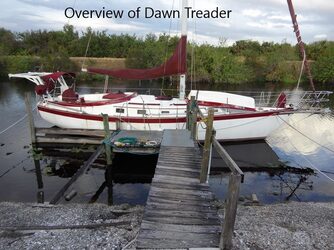 | 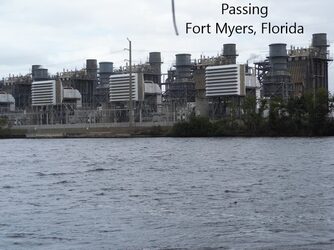 |
 |  |  |
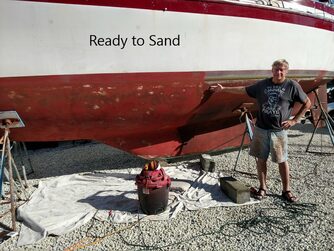 | 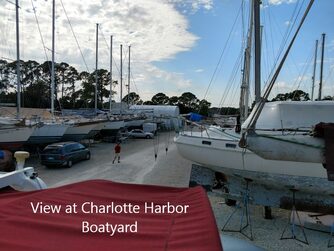 | 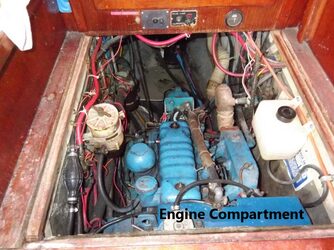 |
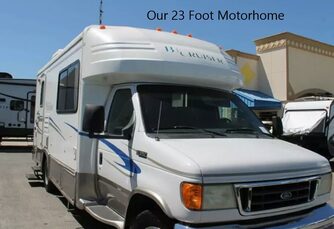 |  |  |
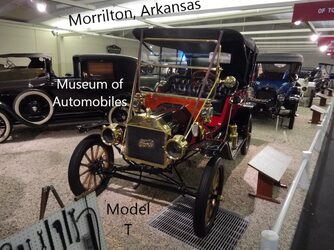 | 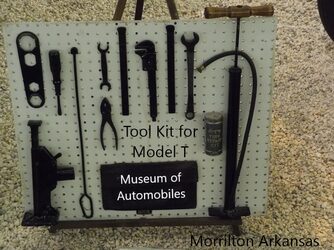 |  |
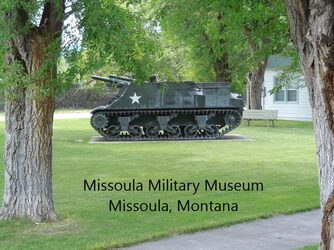 | 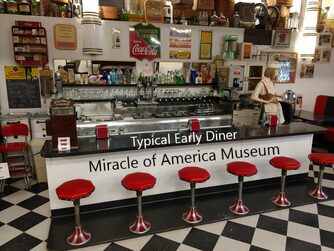 | 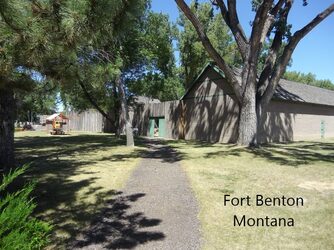 |
 | 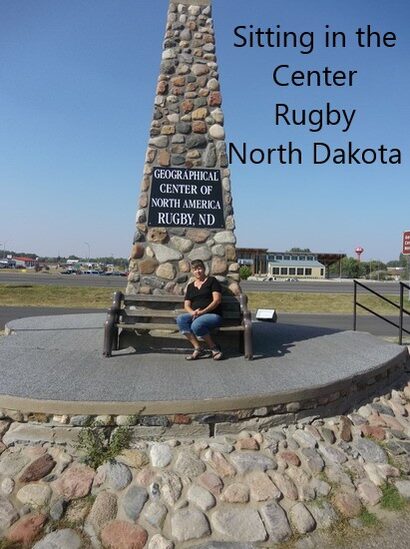 |
Boat and RV
May 9, 2019 Part 2
This post will be an outline of one of the founders of Mobile Odyssey.
Before we met Dawn had lived in Mexico on a 50 foot Hatteras from 2005 to 2011. We met in 20012.
My early retirement started a bit rocky because of a hit and run motorcycle accident, and the first year was spent in therapy and Nursing Homes.
The outdoor life started much earlier first with tents, and later with a 1970 Volkswagen Westfailia that was modified to have a Sink, Stove, Refrigerator, Porta-Potty, and Portable Darkroom.
It was used to do Nature and Wildlife Photography.
For a time I wrote a monthly camping column for a magazine, which led to the eventual publishing of a Camping Book on Amazon.
After recovering from the accident, I left Fort Benton Montana on a kayak trip that had been planned and prepared for during the last 5 years of teaching.
After the trip down the Missouri River, I returned to Tucson Arizona where the first of 5 sailboats was rebuilt and transported to Port Isabel Texas. Shortly after that another sailboat was purchased in San Pedro California.
After a brief 5 year pause in retirement the current boat in Florida was obtained.
After five years and Hurricane Irma the decision to buy a motor home for lad travel became reality.
The original Blog, Sailboat to Motor Home, came about after a discussion in a RV Park about the similarities between an RV and Boat.
Photos today reflect that Odyssey to our life today.
 |  | 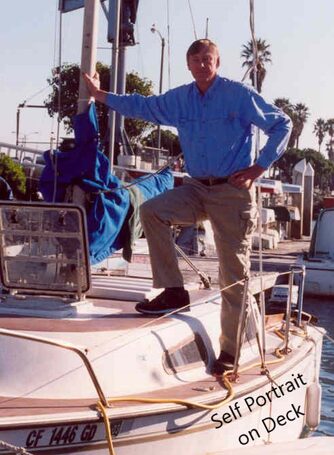 |
 |  | 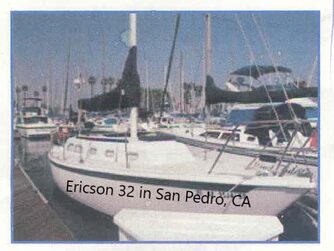 |
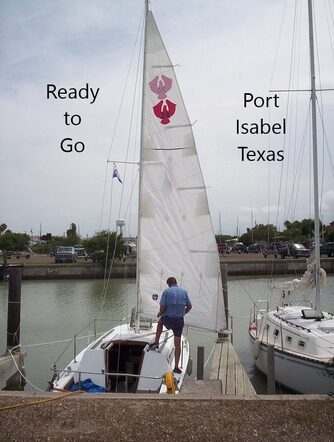 |  | 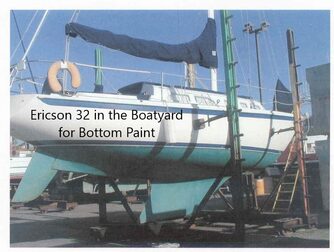 |
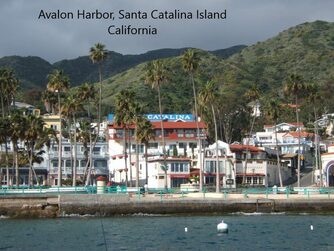 |  | 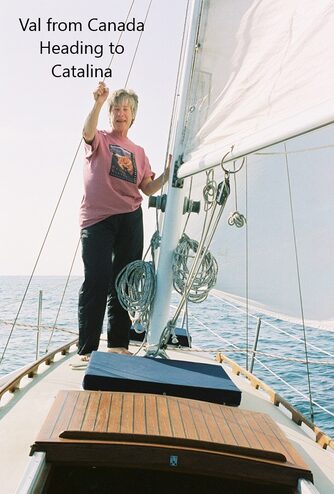 |
 | 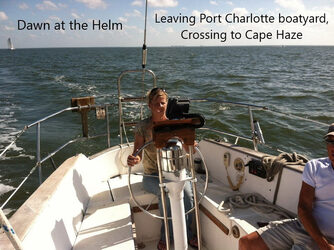 | 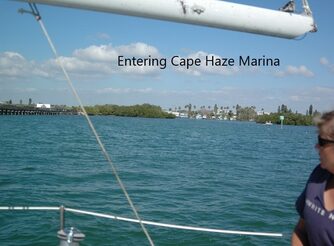 |
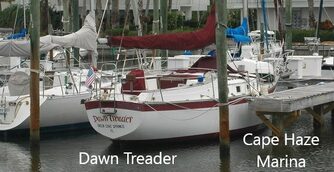 | 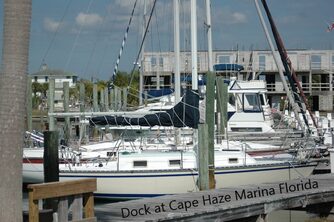 |  |
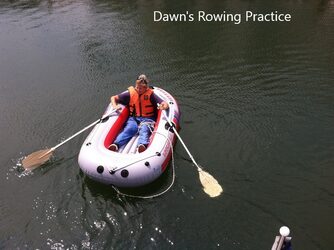 | 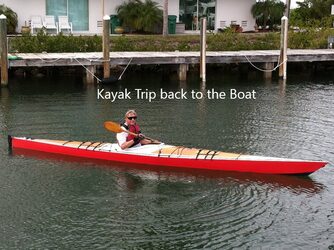 |  |
 |  |  |
|
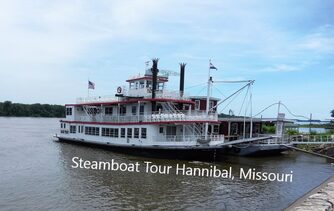 | 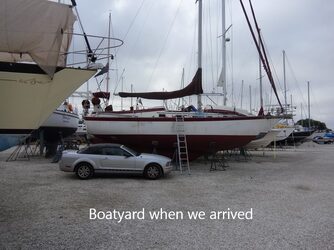 |
Boat and RV
May 10, 2019 Part 3
This is the last of the Bio Series, hopefully we will be on the move again later next week.
Dawn is a retired IT from Verizon and still can remotely repair computer problems.
(Link for TeamVewer is found on our web-page)
She had her own 36 foot Chris Craft Express Cruiser in Long Beach.
Before we met, Dawn had lived in Mexico from 2005 to 2011, and on 50 foot Hatteras in 2005 and 2006.
We met in Arizona 2012, (on pof.com) her web page by-line said “Must Love Fishing” and I wrote back “Than I assume you don’t get Sea Sick!”
On our first date we visited “The Thing” ($1 per person) on Interstate 10 in Arizona and found a place for dinner after.
During that time she talked about how she wanted to meet someone on the Gulf Coast and that after only the first time of sailing she fell in love with sailboats.
Together we left for Florida with a few adventures on the way, and started getting the Dawn Treader into shape.
We got an offer to go up to Turkey Creek, near Labelle, Florida to rebuild a 65 foot Trawler and on the way up I severely burned my hand on an overheated engine and Dawn had to take the helm while we were towed all the way up the Caloossatchee River.
Dawn has designed and maintains our web-site as well as a few others and is expert at driving and parking the motor home.
Dawn generates a recipe each month for our web-page http://ourdawntreader.com
We have hardly been more than 37 feet apart for the last 6 years (Sailboat is 37 and Motor Home is 23 feet long).
Boat and RV
May 12, 2019
Conestoga Charlie wishing all mothers a very happy day!
The month of May has seen a number of new members.
Some may be totally new to the world of Mobile Lifestyles.
Our motor home journey started in June of 2018 with the idea of returning to the sailboat after summer at the end of Hurricane Season.
Like many members, we were new to the RV life. However, our time living aboard our sailboat seemed so similar that it gave birth to the Sailboat to Motor Home blog, and the creation of the group Mobile Odyssey.
The Moniker “Conestoga Charlie” was suggested by a member and the title was changed to Boat and RV to include all the types of RVs and Boats in the group.
Just like others that are new, we have many questions as well. The size of the group and the expertise of members will help answer many of those questions.
~~~~~~~~~~~~~~~~~~~~~~~~~~
In 1966, two people left Newport Boatyard in a boat they built themselves with a vow of “As long as it’s fun!”. In 2006 during a delivery I saw them coming into Santa Barbara, California, to resupply before sailing home to New Zealand via the Christmas Islands. Apparently it was still fun!
Legendary sailors, Lin and Larry Pardey have inspired many through their books and travels to enjoy the freedom and adventure that mobile living can provide.
“Don’t die at your desk” is another admonition from one of the members that has carved out a spot on a beach in the Bahamas!
Travel by boat or RV, full or part time life should be fun and the adventure will eventually outweigh the sacrifices made to participate.
The photos today are some fun things from our past.















Boat and RV
May 13, 2019
Conestoga Charlie here with the latest!
Last night before turning in I posted a battery discussion. Happy today it drew a lively discussion and a few missed the point to be picky, but in general it created a lot of food for thought both on my part and others!
The Readers Digest Version: I stated basically if there is only room for 2 batteries than it is better to have 2, 12 volt batteries in parallel than 2, 6 volts in series.
True, the Trojan 6 volt golf cart type batteries may last a bit longer and have a deeper discharge limit (PLEASE NOTE: I am talking about true deep cycle 12 volts here, not the marine start/deep cycle)
I will now relate why I feel this way from true life!
I was about 60 to 100 miles offshore in my sailboat when we smelled a rotten egg smell. It traced back to the battery compartment, One of my 6 volt batteries was boiling away so I quickly disconnected the bank of 2 which left me only the 12 volt starting battery. Since our refrigeration and navigation lights among other things requires 12 volts, I started the engine.
The cranky Perkins 4-108 just barely got started. I continued to run the engine all the way back and when I finally got docked, bought two 12 volt Deep Cycle and one Humongous starting battery.
As for all the new stuff available in my '04 motor home I know I would need to completely replace my charging system if I wanted to use Glass Mat or Lithium Ion.
The battery people told me that the Lithium ones they sell requires a minimum of 5 or 10 amps before they start charging. My boat charger is a 20 amp programmable so it could work. My motor home has a built in converter charger at present time of an unknown amperage. (I’ll get to it!)
Also the cost of replacing and charging along with my 100 watt solar panel would be around $1000. So for me I will spend that money traveling!











Boat and RV
May 15, 2019
Conestoga Charlie with a discussion of food and storage on the go!
Dawn is sharing the tips today because she has been in charge of the galley both on the boat since 2012 and in the RV since 2018.
Two things that are a problem for most is having meals for only 2 people and preserving.
From Dawn:
FoodSaver’s® FreshSaver® has been one of the best products I have ever discovered. I have been using this product since February 2014. It is more convenient than the original FoodSaver® because of its size and because this is a perfect fit due to the available space. It is so much more useful when living on a boat or in any size kitchen.
One of the best things about this product is the bags being used rather than the rolls that have to be cut and tossed after use. The bag with the two-way valve makes it more useful because after opening the bag and taking what you need out of the bag, the bag can be resealed. Making what food products you buy last so much longer, due the absence of oxygen inside the bag that can make food spoil more quickly.
Tip 1
When buying large or somewhat large quantities of lunch meat, separate lunch meat into amounts usable for short periods of time. Using regular size zipper sandwich bags, place separated lunch meat into the bags, zipping almost all the way closed. Place two of these packages into a one-quart FreshSaver® bag, place a folded paper towel inside with the bags, closing the bag securely and apply FreshSaver® to evacuate air. This technique will not only keep your food from spoiling but the paper towel will absorb any excess liquid. After opening each time to use the lunch meat replace with a fresh dry paper towel and reseal. If planning to freeze the lunch meat a paper towel will not be needed until thawing out. Then, a paper towel will be considered necessary.
The refrigerated lunch meat can last up to two to three weeks using this method in the refrigerator. The frozen will last months and will be as fresh as the day the lunch meat was purchased. This also applies to fresh sliced deli meats and cheese.
Stay Tuned tomorrow we will bring you more tips from our Galley.
For handy recipes visit http://ourdawntreader.com















Solar camping
There is more than solar than Electricity!
I have been reading a lot of post with questions like how many watts of solar does one need to run the air conditioning, or I have 100 Watt solar panel how much more do I need to use my electric coffee pot, and similar?
It seems many are forgetting the other aspects of solar living.
Conservation and Nature!
Ever notice some of the older farm houses in the Midwest and other places?
There are trees planted around the structure.
Why? Because in the summer the leaves shade the home, but in winter leaves fall off and the sun will provide some heat.
How does this relate to RV bondocking?
Think this through, one can learn to conserve electricity or spend much more than it is worth for added wattage and larger inverters.
Years ago before the current trend people were converting homes to be off the grid. First thing was to get a Servel Propane Refrigerator (still made). Less electric use less batteries and solar panels, and most important less cost!
Remember the trees? Well we moved into a site that provides almost complete shade and the inside of the motor home dropped 10 degrees. Today is it 78 outside but a comfortable 73 in side, yesterday at the same time it was 86 inside!
After almost a year of full time travel and one Campground with hookups we finally hooked up the 100 Watt solar panel we got back in Ovtober of 2018!
To address the first 2 questions, How much solar to run air conditioning, more than a year’s worth of gasoline for a generator!
Coffee? Use a percolator on the propane stove!
Mankind was using “passive Solar” long before there were solar cells, make total solar part of your thinking!






Boat and RV
May 17, 2019
Conestoga Charlie with some RV living musings!
The last 2 days we have presented some handy tips for food storage and use. Much has changed since the time when in 1966 a couple I knew took off in their sailboat.
Back then it was ice in a integral ice chest on board. In their book “Care and Feeding of the Sailing Crew,” Lin Pardey lists all the foods and how long they will stay without refrigeration.
In my early camping days I started out with a full ice chest and when it was depleted, I ate canned food!
When RV manufactures started including refrigerators it opened new vistas for independent travel.
It took longer for the boating industry to include it because of the difference in the refrigerator requirements for boats.
Many of the younger set do not remember the early trials and the many times they failed and food supplies were lost.
When I planned my kayak trip down the Missouri River I never even considered any type of refrigerated storage, and because of space limitations had no canned goods either.
Freeze Dried foods had been around for some time but was still somewhat limited; however it was possible to build a good variety of reasonable balanced meals.
Some MRE’s (Meals Ready to Eat) were also used.
So, what about today? How many in the Boating and RV still take advantage of non refrigerated foods or is it just the Back Packing set?
Photos of Places we've visited and other adventures














Boat and RV
May 18, 2019
There has been an influx of new and potential owners lately. To respond to this Conestoga Charlie is posting a guide for new owners.
Here is an excerpt from my upcoming book “Road to Freedom”
Some parts may seem complex however; it is well worth taking the time to sort it all out!
After the purchase, learning how to operate all the systems is a necessity.
The dealer should provide a thorough run through.
The most important thing is to learn what to ask and what to check. Most important find out where everything is! It is no fun to discover and repair things on the road where it is more expensive and inconvenient.
This is a partial list of things to run through especially for a used unit:
- Toilet, how does it flush? Does it flush?
- Fresh water tank and pump.
- City Water Hookup.
- Hot water heater, how does it ignite?
- Furnace, does it blow hot air?
- Shore Power connector. Is it in serviceable condition?
- Air Conditioner, does it blow cold air?
- Refrigerator, is it 2 or 3 way and does it work in all modes?
- House battery, is it serviceable and is it a true deep cycle battery. Ours was 2 years old and a combination Marine Start/Deep Cycle that was on the verge of dying.
- If it is equipped with a generator - make sure all is working properly.
If the RV is new or used all these things should be in working order before signing on the dotted line.
When buying a used RV from a dealership, it would not hurt to ask the dealer if it is possible to come spend the day with it before buying. Coupled with checking out the things already mentioned, it is possible to gain insight on how the livability will be once it is out on the road.
If it is a motor home it’s good to have someone check for repaired collision damage as well. This could affect the driveability.
Spend a day or two with the RV before heading out to the first excursion.
Before we left, we knew we wanted to install a medium capacity inverter as there was none in our motor home.
Learn everything about the electrical system as there are 2 in motor homes, one for the vehicle and one for the house part. These should be isolated so using the house part does not discharge the starting battery.
A simple voltage tester will tell the story faster than anything else. None of this information was given in the manual to our motor home.
This procedure will provide answers that will be very useful.
- Use a voltmeter to test the house battery with generator and engine off while disconnected from shore power. Voltage should read close to 12 volts. (11.8 to 12.5)
- Start Generator. (motor home, Travel Trailer, and 5th Wheel) The voltage should now read at least 13 volts. (13.3 to close to 14 is acceptable )
- With generator running check starting battery in motor homes. If the voltage does not match the house battery, reading the start battery is not charged by the generator. (Note some motor homes may have an emergency switch that will allow starting from the house battery.) If so equipped, have a helper push the emergency switch on and check start battery for increased voltage.
- Shut down generator and start the engine in motor homes. If the house battery is over 12 volts than also check to see if the start and house battery is the same voltage.
- Now shut down the engine and before starting the test, wait a few minutes before checking the house battery. If the voltage is below 12 volts, it may need to be replaced soon.
- Plug in to shore power: Check both house and start battery if it is a motor home. House battery should now read more than 13 volts. If the start battery is not matching the voltage than it is isolated from the house charging circuit.
- The last check requires a helper. (motor homes only)While checking the voltage of the starting battery, have the helper start the generator.
If there is no voltage drop the house battery starts the generator.(Note some may have a dedicated battery to start the gen-set)
After performing these tests, the charging and house electrical system functions will be known.
One more handy thing to know is that there is a relay, usually in the engine compartment that connects the house and start battery while the engine is running. 5th wheel and Travel trailers may also have a charging circuit in the wiring harness when hooked to the tow vehicle.
I asked a service technician why there was no provision to keep the start battery charged. I was told, “so the starting battery would not over charge!”
I believe this is false as the charger is regulated. However, for whatever reason our motor home start battery is totally isolated.
There is an emergency start switch that temporarily connects house batteries to start the engine.
One day after being parked and on shore power for 3 or 4 weeks the start battery would not start the engine.
Remember that relay that was mentioned? One side read 13.3 volts and the other read under 4! (We had left something plugged in to the dash outlet!) It was an easy job to fashion a small (minimum # 10 wire) jumper to start charging the battery. Within 30 minutes I was able to start the engine.
Now when the start voltage falls below 11.8 the jumper is hooked up over night and everything is good to go. (Caution if the battery charge drops below 11.8 volts in less than an hour the battery may be due for replacement)
This may seem like a lot of trouble; however it just may prevent a very expensive service call in the middle of nowhere!
Bottom line is to learn everything possible before that first trip. If things seem confusing get help, watch YouTube but whatever, do not put off understanding how it all works.















Boat and RV
May 19, 2019
Wakie, wakie, Conestoga Charlie and company are on the move again.
Amidst Flash Flood and Tornado watches we bedded down for the night on our trek north to escape the coming hot South Texas weather.
One year ago we bought our 2004 Gulfstream BT Cruiser 23 foot motor home to escape Florida’s Hurricane season and hot weather.
We had lived aboard our sailboat Dawn Treader for 5 years while we rebuilt it;
Before that Dawn and I both lived on boats in California and Mexico, so we were no strangers to Mobile life.
The similarities and distinct differences gave rise to the first series “Sailboat to Motor Home” and shortly after led to the creation of the Mobile Odyssey FaceBook group.
The name of the blog evolved to Boat and RV as the many people with Travel Trailers, Fifth Wheels, Sailboats and Power Boats became readers of the blog.
My moniker “Conestoga Charlie,” was suggested by one of my friends.
The goal is as always to present an interesting travel log, and to share useful information and tips to make mobile living more rewarding.
I take my lead from observing questions in this and other groups we visit.
There are life challenges that are unique to life in the fast (or in our case slow) lane! There is always an open invitation to suggest topics for discussion.
Photos today are from our first month of travel.




















Boat and RV
May 21, 2019
Conestoga Charlie on the trek north!
We are sitting in Greenville, Texas waiting for the thunderstorm to pass to continue to McKinney for a last visit with good friends before continuing toward cooler weather.
As many of our readers know we started out with a sailboat and the intentions were the same, travel North in Summer and South in Winter!
Many of the people we know and have met along the way are doing just that.
Craig and Andrea own a Class A and a boat they keep in Gig Harbor. Last year we met for lunch in Tucson.
Tom and Keg who live on their sailboat are preparing to sail to Maine.
These are just two of the many who embrace the mobile lifestyle and enjoy the advantages of pleasant climate conditions while traveling.
Taking advantage of our historical heritage along the way is also a great motivation.
Either way one great advantage with either boat or RV is the ability to wait out weather in a safe harbor (or even a Wal-Mart parking lot) when you are self contained.
Our first anniversary of full time RV travel is approaching and we have decided to leave the boat in storage one more hurricane season.
Today’s photos are from the start of our journey.













Boat and RV
May 22, 2019
Conestoga Charlie is jumping into the solar debate today with some rather unconventional thoughts.
I expect a lot of debate but, caution: make sure that all has been read and understood before criticizing as I am merciless in a debate!
Some Considerations for Solar camping Part 1
What you are about to read is all from Real Life experience and some flies against current beliefs!
Everything written comes from 16 years of full time living on boats and in RV’s, plus many years of wilderness camping and Nature Photography.
To start there is more to solar camping than Electricity!
I have been reading a lot of posts with questions like - how many watts of solar does one need to operate ----(fill in the blanks here)
Quite honestly this is akin to looking through the wrong end of the telescope!
The question that should be considered is how to reduce the dependence on electric gizmos.
Those who are just starting, learn to operate your RV as is, that will do more to teach conservation than anything else.
For veterans, it is good to re-evaluate all things related to energy use before starting to consider solar power.
Regardless of the approach three things are necessary, Batteries for storage, Solar Cells for Electric Generation, and an Inverter to convert 12 Volts Direct Current to 120 Volts Alternating Current.
Let’s take a look at each of these starting with the batteries.
There is a lot of discussion with batteries because they are, honestly, the backbone of any system.
Standard lead-acid batteries are often overlooked however, in reality provides a very serviceable system and I still believe provide the best bang for the buck!
AGM (Absorbed Glass Mat), with the advantage of practically zero maintenance, has been a popular choice for more than a few years now.
I remember thinking of replacing them in my boat back in 2004, and a very good friend who was a Manager at West Marine not only was able to fill me in on the number of warranty failures but the actual duration in use because he had replaced all of his (at a very reduced price, I must add)!
Quite honestly the IF the service life is as advertised it is a very close wash to the cost of lead-acid type. Much like Diesel verses Gas- you get a few more miles per gallon at a few more cents per gallon!
Lithium-Ion is touted as metrical batteries.
Put these in your boat or RV and they will run everything for days and recharge in minutes and probably cure cancer!
The reality is that these batteries need quite different “management” than lead-acid and if you have any but the newest RV or boat it is quite likely that entire charge and regulation system will need to be replaced. (BMS -Battery Management System)
If charged improperly they will be quickly destroyed.
It will cost not only hundreds of dollars more for the batteries but much more than cost to revamp the entire charging circuits which are even more complex for a motor home because standard automotive alternators must be also replaced with “smart regulators” because the engine charges house batteries as well.
Is it possible to simply replace lead-acid batteries with either AGM or Lithium-Ion batteries? Currently it does not appear to be possible with good results.
(a search through the internet gave me prices from around $400 to $1000 for Lithium Ion )
Quite frankly, I would take a long hard cold look before jumping on that battery bandwagon.
Side note: we have been 11 months in our motor home with 2 standard $99 12 volt Deep Cycle Lead –Acid batteries (from Batteries Plus) and have not yet had to add water but check every month. We have only stayed at a full service camp once and 3 friends homes where we had shore power.
We have had below 30 degree nights 3 times and ran furnace all night with 11.8 to 12.2 volts the next morning (No generator use).


Boat and RV
May 25, 2019
Conestoga Charlie wishing a warm Welcome to all the new members.
We have been getting many more new RV owners lately so just wondering what the balance between Boat and RV is currently.
Many members know we started out with boats.
Dawn and I have lived aboard boats since 2002 and had our sailboat together in Florida since 2012 shortly after we met in May 2012.
We survived Hurricane Irma onboard on our Endeavour 37 and in May of 2018 purchased a 2004 Gulfstream BT Cruiser 23 and put the boat in storage.
We have been traveling since June 4, 2018. During that time the group Mobile Odyssey was formed and this evolved from Sailboat to Motor Home to simply Boat and RV to address the different boat and RV ownership.
There were so many similarities between boat and RV travel it seemed a natural form this group to combine the two for shared experiences.
We have maintained the web page
http://ourdawntreader.com , which documents our time and some tribulations aboard our Florida boat.
In the past I have done a 10 part series directed to new owners and a 3 part series dedicated to keeping solar simple yet providing explanation to make it easy to install and use solar power for both.
If there is a demand they can be reviewed.
Our membership is growing and we are close to 300 members which is large enough to encompass expertise and small enough not to be inundated!
We have personally met some members and hope to meet more in the future.
We are currently in Texas helping some very close friends reduce the many stored items they have collected over the years.
Today’s photos are from the early days of our trip North.
















Boat and RV
May 29, 2019
Conestoga Charlie with a look at what’s ahead.
The group is growing slowly, which is a good thing as it is preventing the contention found in some of the other groups. Many months ago Mobile Odyssey was kept private by a vote of the membership. Many said they were more likely to post if it’s kept private.
One goal is for members to share their joys and ??? of travels and Photos are most welcome.
Mobile Odyssey as a whole was designed to present a blend of RV and Boat living whether full or part time.
Their are so many similarities as we discovered our first year off our sailboat.
My personal goal is to share useful ideas, and tips as well as our travels.
Interest in using solar power has been growing for a few years now, so that interest will be addressed.
A company has recently approached me to present their complete systems, so for those interested they will appear shortly.
Helping new owners is a big goal and to that extent a series will be presented from time to time.
Some of the views presented may be a bit unconventional however my ego will not be bruised if others wish to comment.
June 4th marks the first year anniversary of leaving our 37 foot sailboat and living in the 23 foot motor home.
We will mark that day by republishing that first blog and photos.
I must say that first gas stop was a shock!
Again I wish to repeat that our desire is to see member’s travels and stories as well as suggestions for topics and most of all remember to keep it fun, and most important, live life to the full.
Today’s photos are some of the rest stops during the past year.




























Boat and RV
May 30, 2019
Conestoga Charlie with the last of the month.
It is our hopes that no one was caught in the Tornadoes that have devastated the Mid-West this past week.
There is considerable interest in solar. I have written a 3 part series on considerations for using solar.
It is a great idea and a handy source of portable power but it is not “Free Electricity” as so many claim and is not without limitations.
Some issues have been about the use of residential refrigerators.
I have had some complaints that the propane absorption type does not keep things cold in warm ambient temperatures.
We had a similar problem until a defroster setting switch was changed (Called a Condenser Button in the freezer section on our model).
Last week we had inside temperatures around 94 to 96 and everything stayed cold and food in the freezer section was solid.
Some of my ideas run a bit counter of many however, in the interest of economy they have merit. Some may disagree and that is fine.
So I hope everyone stays with us and benefits from our many years of living and traveling full time on boats and motor homes.
Also coming up is a 10 part series aimed at new owners. It will be posted 2 episodes a day so tell you friends and again we hope it will be useful.
It is in the process of being turned into a book.
We will be on the road again soon as we finish up the business in Texas!
Photos today are more of the rest stops we have encountered. Some are very good and even include dump stations. Hopefully in the future we can compile a list.















Boat and RV
May 31, June 1, 2019
Conestoga Charlie with the promised series for potential and new owners.
I have noticed a lot of post from people who are considering or have just bought an RV and wanting recommendations. I first ran these over a 10 day period but will be posting 2 each day. Enjoy!
New Owner File 1
The First Day of the motor home journey was June 4, 2018! We bought our first motor home on May 15th
Having lived aboard a sailboat since 2003 many of the things were familiar still we considered ourselves “newbees”to RV’s, so join us and we will discover the world of RV living together!
The reason we bought a motor home is because we did not have a vehicle capable of towing a Travel Trailer or 5th Wheel. Like boats there are advantages and disadvantages to each.
We also chose to sell our '07 Mustang Convertible as it had 200K+ miles and the added cost of rigging it to tow was prohibitive both for money and time line for departure. Understandably that decision is going to make some things inconvenient, but simpler during trips.
The first hurdle is the purchase process.
The decision to buy new, used, from a private party, or dealer will depend on many factors and they are all related to how many little green things are in the wallet.
Most dealers have some type of warranty on used units, because of the age of ours (2004) our dealer provided a check of all systems and provided a “Camp Ready” guarantee which was basically that all appliances were in working order. This guarantee was good till the end of the driveway!
This is still better than anything from a private party, and if it is a “first purchase”, it may be the better way to go.
Buying from a private party may save in the short term however, a good suggestion is to have a cash reserve and or skills to cover repair or replace for major systems. We had that issue with our sailboat even though it was surveyed; there were major problems that the survey missed!
Financing is the other important decision. I will state unequivocally that cash is best.
Many dealers offer 15 to 20 year financing. This is inviting on the surface, however the interest rates are terrible, and the fact that an RV is a depreciating item, just may turn out to have payments on an RV that is no longer useable.
There are other better options, a credit union, bank, or second mortgage. It would be a good idea to secure pre-approved financing.
We spent our first night in Columbia County Rest Area, Florida, after dinner and first fill up of the trip in Ocala. A Texaco station was handy so we filled up ($109)! Thinking about the fuel cost, I can’t help thinking about how far I can sail on $100.
One more detail, Roadside Assistance!
RV towing like boat tow is not usually covered in standard coverage. One of the photos shows our boat being towed when we had a serious engine problem. That tow would have cost a little over $2300 had we not had insurance.
We started out our RV experience with a 3 year Membership in Good Sam when we bought ours. I’ve heard since there may be better.
The stop at Wal-Mart provided the first modifications to the motor home. LED Replacement bulbs and a 750 Watt Inverter was purchased to add to Boondocking capability.
LED bulbs are one of the greatest additions in recent history.
Our power consumption went from a little over 8 Amps to less than 1!
This should be enough to get started; more post will follow, so join the adventure.







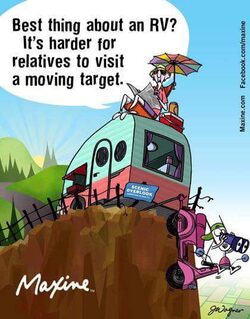


Boat and RV
May 31, June1, 2019
Conestoga Charlie with Part 2 of today’s new owner files.
New Owner File 2
The last post discussed the aspect of where to purchase the RV, and mentioned having a warranty.
Our third day out we discovered a leak in the freshwater tank. Because we bought from a national dealer they did replace the leaking drain valve at no charge.
At that time we also learned something very important about tires on RV’s. Even though they did not look worn at all they were 5 years old. It was highly recommended that they be replaced. It seems that because RV tires unlike auto tires spend more time sitting which deteriorates the tires from the inside.
Also, when buying tires be sure to check the date molded on the sidewall to be sure of getting “fresh” ones.
Probably the next important thing on the RV agenda is emptying the waste tanks.
Next up was heading to a dump station. This is the second time.
Thankfully not at all like Robin William’s movie RV!
It should be a simple process IF all the hoses are connected securely and rubber seals are in good shape.
Our sailboat is similar. Sounds worse than it really is, pump out stations from shore literally must “suck” it out of the boat.
There is a special deck fitting for this purpose.
One more quick thing, where to stay on the road?
The photos illustrate a few interesting places, which are reasons for RV’s.
https://freecampsites.net can provide many destinations at no cost. We stayed in some so far and one was super with a free dump site close by.
Many Wal-Marts allow overnight stays.
Next up, aspects of being “Self Contained’”











Blog Search
Blog Archive
- August 2021 (1)
- July 2021 (1)
- June 2021 (1)
- May 2021 (1)
- April 2021 (1)
- March 2021 (1)
- February 2021 (1)
- January 2021 (1)
- December 2019 (1)
- July 2019 (1)
- June 2019 (1)
- May 2019 (1)
- April 2019 (1)
- March 2019 (1)
- February 2019 (1)
- January 2019 (1)
- July 2018 (1)
- June 2018 (1)






Comments
There are currently no blog comments.